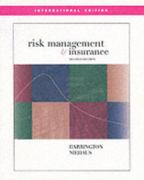Question
Consider a small open economy that in every time period t is populated by two generations: young denoted by subscript y and old denoted by
Consider a small open economy that in every time period t is populated by two generations: young denoted by subscript y and old denoted by subscript o. Therefore, we assume that each agent lives for 2 periods: a young in period t becomes old in period t + 1. Young enter the economy with zero assets, receive endowment q and pay lump sum taxes t to nance government expenditure gt . Disposable income of the young can be spent on consumption cy,t or saved in a riskless asset bt in the world capital markets at a constant interest rate r. Consumption in the old age co,t+1 is nanced only by individual savings. Agents make inter-temporal decisions spanning the two periods of life and their lifetime utility function is given by: U(cy,t, co,t+1) = ln(cy,t)+ln(co,t+1), where denotes the discount factor. 3 In each time period t, there are Ny,t young people and No,t old people. Hence, the total population is: Nt = Ny,t+No,t. Assume that the young generation grows at the xed rate n, so that: Ny,t = (1+n)Ny,t1. Finally, the government maintains a balanced budget in each period and gt = t . a. Given the description of this economy, nd the optimal aggregate consumption, aggregate savings and the current account in period t. (Hint: compute the shares of each generation and then aggregate optimal individual outcomes) b. How does a decline in the population growth rate aect the current account? c. Suppose the government increases its expenditure, therefore raising taxes in the same period. How does this aect the current account? Does the Ricardian equivalence hold in this economy? Briey explain.
Step by Step Solution
There are 3 Steps involved in it
Step: 1

Get Instant Access to Expert-Tailored Solutions
See step-by-step solutions with expert insights and AI powered tools for academic success
Step: 2

Step: 3

Ace Your Homework with AI
Get the answers you need in no time with our AI-driven, step-by-step assistance
Get Started


